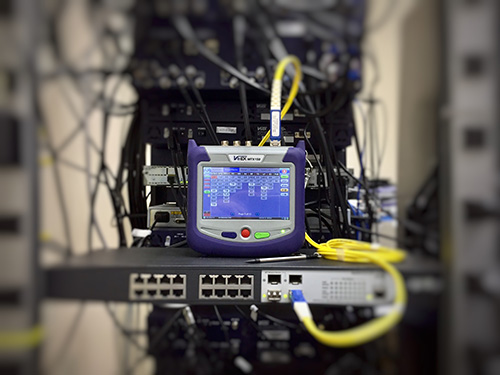Why should you use the WorkingAge of Wellbeing (WAOW) tool?
European Population is ageing and poor baseline health condition of our adult population is expected to continue into the near future. Cost of employer-provided health benefit plans has increased every year since 1997. This costs decreases the probability of entry into self-employment by 1.7%. The impacts of these societal shifts are increasingly being borne by the employer in terms of both direct healthcare costs and indirect productivity loss costs. In 2013 in EU-28, there were 3674 fatal accidents, approximately 3.1 million non-fatal accidents with at least four days of absence and 7.4% was suffering from one or more work-related health problems caused or made worse by work. These figures highlight the need for preventative measures. WA aims to enhance health and safety working conditions, the WAOW Tool will supervise working conditions and will provide different types of interventions. WA combines the efforts of employers, employees and society to improve the health and well-being of people at work. Moreover, societal elements, such as cohesion among individuals obtained through personalized technology and friendly/intelligent human interfaces, will strengthen the potential for health and well-being at the workplace and a healthy balance between working and private life. WA has advantages for the stack-holders as follows:

It will prevent illnesses at the workplace (including work-related illnesses, working accidents, and stress), by providing an improved, smart environment enriched in comfort and in surveillance thanks to networked sensors.

WA platform will lay the basis of a reliable, non-intrusive user health status monitoring, in which specialists and researchers will able to collect data towards the identification, root causes and correlation between factors for phenomena of interest.

WA provides services that insurance companies can benefit from. Moreover, this can reduce the health insurance cost, through continuous monitoring and reporting of health and reacting faster to abnormalities.

Through the findings in WA on the root causes on work-related psychological and physiological malfunctioning for elderly employees, policy makers can adapt the existing regulations (which currently do not differ between elderly and young/adult) in terms of working conditions such as working hours, retirement age, work difficulty, etc.

The WAOW Tool will provide opportunities of more flexible working through technology enabling employees to operate in an environment that best suits their personal working needs and expectations. The wish for time/space flexibility is increasingly becoming an issue for executives at the senior levels of the organisation. Flexible working arrangements, such as work from home, co-working and so on, ensure greater rates of retention among employees who are close to retirement. These may choose to move into different roles or embrace flexible working arrangements as an alternative to full retirement. Ensuring that older workers remain associated with the company helps retain knowledge while providing an ageing population with employment options.

Promoting workforce health and protection has to be coordinated with efforts such as the emerging “medical home” concept, championed by all primary care specialities, which envisions a strong emphasis on partnerships between patients and a medical team to achieve optimal health. WA project will make its efforts at integrating health promotion and protection in the workplace, connected with the medical home, with the employer occupying a role as a member of an individual’s “health team” and medical community.

Work is consistently rated among the top two or three sources of stress among individuals contributing to psychological (e.g., depression, anxiety), physical (e.g., cardiovascular disease, obesity) and behavioural (e.g., increased alcohol use, addictions) problems. Possibility of early diagnosis will reduce the costs of the national healthcare systems and promote independent living.
Would you like to give us your opinion? please contact us.
How does it work?
The WorkingAge of Wellbeing (WAOW) tool will combine Human-Computer-Interaction (HCI) methods supported by different measures reflecting the user’s cognitive and emotional states for giving recommendations to workers interacting in their usual working environment.
These measures are based on the physiological user’s data such as gesture, voice recognition, eye tracking, electroencephalographic data, heart rate and skin conductance. The human-computer interaction data will be supported by different everyday-wearable devices and could include also augmented reality and virtual reality. The use of Internet of Things (IoT) will enable the WAOW Tool’s sensors to also detect the external environmental conditions.
The general purpose of the WAOW tool consists in promoting healthy habits of users in their working environment and daily living activities in order to improve their working and living conditions. The tool will be an integrated solution that will learn the user’s behaviour, health data and preferences and through continue data collection and analysis will interact naturally with the user. The system will be based on decision-making algorithms: such algorithms will make use of hybrid models mixing a-priori knowledge with machine-learning methodologies.
This innovative system will provide workers assistance in their everyday routine in the form of reminders, risks avoidance and recommendations. Depending on the user’s activity and cognitive state, the WAOW tool will provide in real-time hints or solutions to the user related to the working context: this reasoning engine will offer a set of operations on the defined Ontology’s axioms and rules, providing recommendations on working habits, physical activities and social relations.
Demos

Pilot’s test results (open data)
WA will perform two types of tests in three different time-scales:
a. Single Tests: experiments are performed with one individual in a single occasion. Single tests will run in two sessions and two series and will be performed with up to 90 individuals. They will involve the analysis of in depth aspects and validity of the intervention focusing on user expectation, usability and validity.
a. Single Tests: experiments are performed with one individual in a single occasion. These tests will be used to fine-tune the subsystems for the users that will perform the week and long-term tests.
b. Week Tests: These experiments assess unmonitored interaction, track Occupational-related parameters for analysis, and test if the system detects a health risk and delivers an intervention. Objective (Are they still using it after three weeks?) and subjective reactions (what did they like best? what didn’t they like?) will also be tracked. The scenarios considered in the tests, called evaluation scenarios, will be defined for the three use cases.
c. Long-Term Tests: to assess the ultimate goal of prevention and monitoring on a long-range time scale, 90 individuals will be monitored for a year towards the end of the project.
There will also be a follow up after 6 months to see whether the technology is still used (reflecting sustainability).



